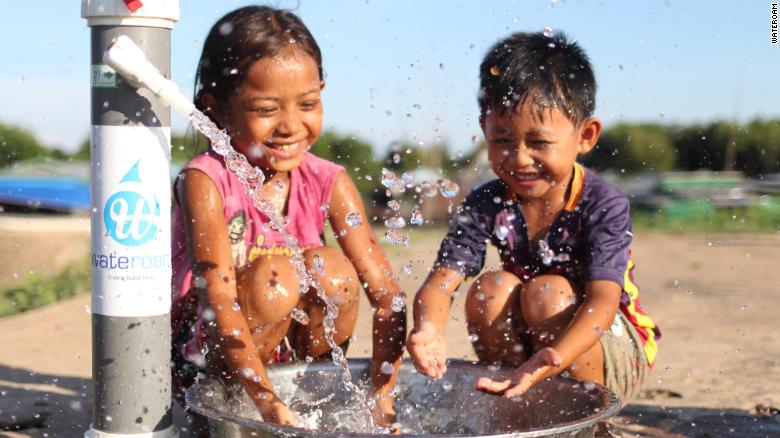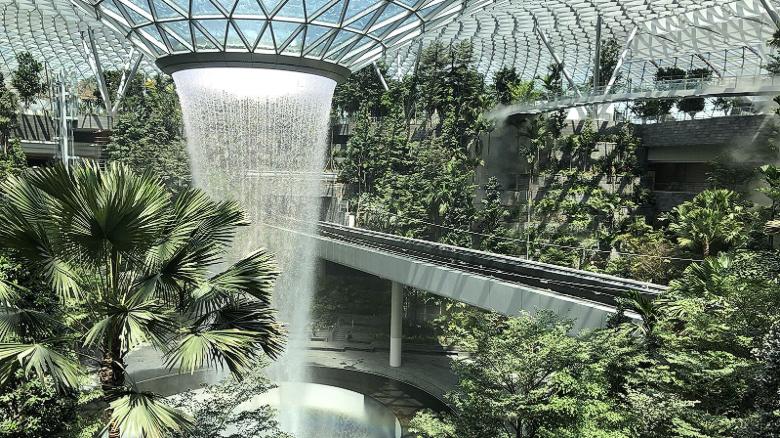新加坡如何利用科技解决水资源短缺
新加坡如何利用科技解决水资源短缺
Singapore uses about 430 million gallons of water every day — a number it expects could double in the next four decades.
新加坡每天消耗约4.3亿加仑的水,预计这个数字在未来40年内还会翻一番。
That kind of consumption is piling pressure on the Asian city state to address growing concerns about global water scarcity. So it's building new technology to prepare itself for a future where obtaining clean water will be even more difficult.
这种用水量给这个亚洲城市国家带来了压力,要求它解决全球水资源短缺日益加剧的问题。因此,它正在开发新技术,为将来获取清洁水将更加困难做好准备。

"Singapore truly has become a global water hub," said Shane Snyder, executive director of the Nanyang Environment & Water Research Institute at Singapore's Nanyang Technological University.
新加坡南洋理工大学南洋环境与水研究所执行主任谢恩•斯奈德表示:“新加坡确实已成为全球水资源枢纽。”
"But as it stands, it imports approximately 40% of its water today. And with climate change, that water has become far less dependable."
但就目前情况来看,它目前大约40%的水依靠进口。随着气候变化,水资源变得越来越不可靠。”
Rapid urbanization and rising global temperatures are making access to natural water sources increasingly hard to come by. Today, a quarter of the world lives in areas of high water stress. Experts say we're consuming natural resources faster than the earth can replenish them.
快速的城市化和不断上升的全球气温使得获得天然水源越来越困难。今天,世界上四分之一的人生活在缺水严重的地区。专家表示,我们消耗自然资源的速度超过了地球补充自然资源的速度。
Singapore, meanwhile, is home to more than five million people and is covered in fountains, reservoirs and other water features — including the world's tallest indoor waterfall, a 130-foot Rain Vortex that pumps 10,000 gallons of water per minute. But it has no natural water sources of its own, instead relying heavily on recycled water and imports from its neighbors.
与此同时,拥有500多万人口的新加坡到处都是喷泉、水库和其他水景,其中包括世界上最高的室内瀑布,一个130英尺高的漩涡雨,每分钟能泵出1万加仑的水。但它自己没有天然水源,严重依赖循环水和从邻国进口的水。

Snyder's research facility is one of several places developing solutions for Singapore's water dependency. The hope is to create projects that could be used across the city.
斯奈德的研究机构是为新加坡水资源依赖问题开发解决方案的几个地方之一。希望创造出可以在整个城市使用的项目。
"What we have become used to as reliable water, may quickly change — so we have to be prepared, we have to be thinking about the infrastructure in advance," Snyder said. "There's a big drive to become water independent — to control our own future — and that is largely dependent on the technologies we're developing."
“我们已经习惯的可靠水源可能很快就会改变,所以我们必须做好准备,我们必须提前考虑基础设施,”斯奈德说。“实现水资源独立的巨大动力—控制我们自己的未来—而这在很大程度上依赖于我们正在开发的技术。”
- 频道推荐
- |
- 全站推荐
- 推荐下载
- 网站推荐


















